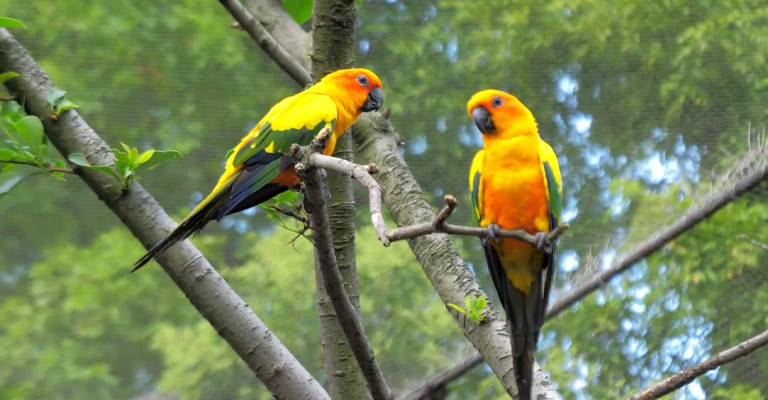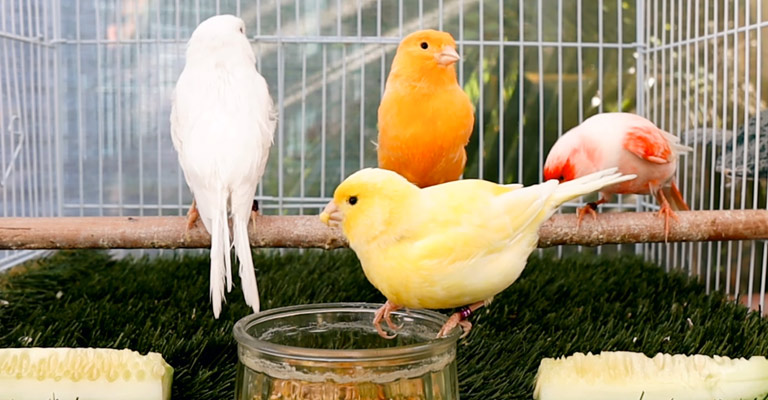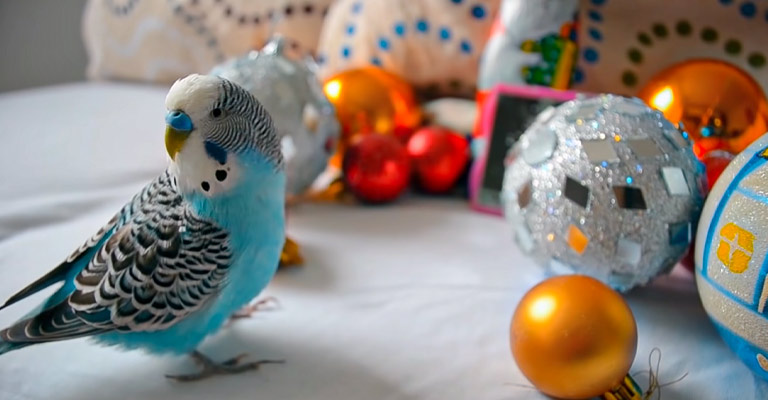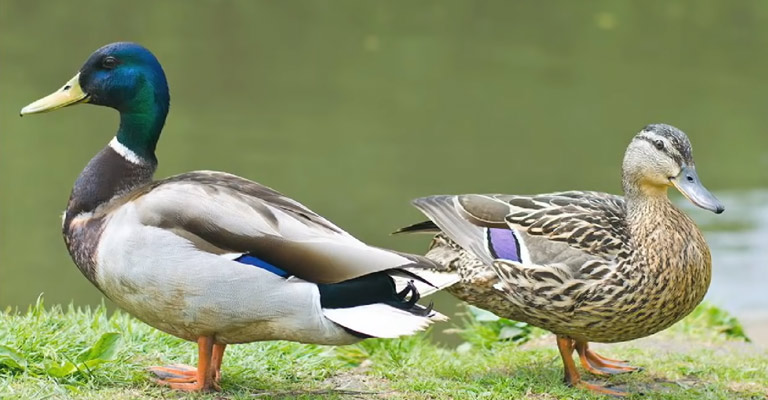The intricate dance between humans and birds has spanned millennia, with the domestication of avian species representing a pivotal moment in our shared history. Birds, revered for their beauty, song, and utility, have been intertwined with human existence for thousands of years.
In this exploration, we journey back in time to uncover the origins of bird domestication, shedding light on when and how this intricate partnership began.
From the early domestication of chickens in Southeast Asia to the melodious songbirds that graced ancient homes, we delve into the captivating stories of how our feathered companions became an integral part of human civilization.
The process of selective breeding, which shaped diverse bird breeds, and the ethical considerations surrounding avian domestication will also be unveiled. Stay focused.

The Early Connection between Humans and Birds
The early connection between humans and birds dates back to prehistoric times, evolving into a rich tapestry of cultural, ecological, and symbolic significance.
For our ancestors, birds held practical importance as sources of food, feathers, and inspiration for tool-making. Avian migrations likely inspired early humans’ understanding of seasonal changes and navigation.
Beyond survival, birds assumed spiritual and mythological roles in various cultures. They symbolized freedom and transcendence, with stories of bird-human transformation and communication appearing in folklore worldwide.
Ancient Egyptians revered the ibis as a symbol of wisdom, while the eagle held spiritual significance for Native American tribes.
Today, our connection with birds persists in diverse ways, from birdwatching to conservation efforts. Birds remain vital indicators of environmental health and inspire art, literature, and scientific inquiry. This enduring bond showcases the profound and enduring connection between humans and the avian world.
The Emergence of Poultry Domestication
The emergence of poultry domestication represents a pivotal moment in human history. It is believed to have begun around 7,000 to 10,000 years ago in Southeast Asia, with the red junglefowl (Gallus gallus) as the primary ancestor of the modern chicken.
Early humans likely observed the benefits of taming these wild birds, initially for their meat and feathers. Over time, selective breeding led to the development of birds with desirable traits, such as larger size and more docile behavior.
This gradual transformation marked the transition from wild junglefowl to domesticated chickens. Poultry domestication had a profound impact on human societies.
Chickens provided a steady source of protein, eggs, and feathers, improving nutrition and resource availability. Additionally, they played a role in religious rituals, cultural symbolism, and trade networks.
Today, domesticated poultry, particularly chickens, are one of the most widespread and economically significant livestock worldwide, supporting agriculture and food industries, and showcasing the enduring legacy of poultry domestication in shaping human civilization.
Role of Canaries and Songbirds in Domestication Birds

Canaries and songbirds have played specific and unique roles in the domestication of birds, primarily due to their melodious songs and aesthetic appeal. Here are some key aspects of their involvement:
Aesthetic Value
Canaries and songbirds, such as finches and canaries, have captivating and melodious songs. This melodious quality made them attractive to humans as pets and led to their selective breeding for specific vocalizations.
People have appreciated these birds for their beauty and the calming, pleasing effect of their songs.
Pet Trade
Canaries and songbirds were among the first birds to be kept as pets, dating back to ancient times. Their small size and colorful plumage made them suitable for domestication and popular choices among bird enthusiasts.
The pet trade led to the development of various breeds and color variations, further emphasizing their aesthetic appeal.
Cultural Significance
In some cultures, canaries and songbirds hold cultural and symbolic significance. For example, canaries were associated with purity and innocence in European cultures and featured prominently in art and literature.
Contributions to Science
Songbirds, especially those with complex songs like canaries and finches, have been valuable subjects for scientific research on animal behavior and neurobiology. Their intricate songs and ability to learn new tunes have contributed to our understanding of vocal communication and learning in birds.
Conservation
Due to their popularity as pets, canaries and songbirds have also been involved in conservation efforts. Concerns about the impact of the pet trade on wild populations have led to initiatives aimed at protecting these birds and their habitats.
Canaries and songbirds have made significant contributions to human culture, science, and the pet industry due to their beautiful songs, aesthetic appeal, and unique characteristics.
Modern Aviculture and Bird Domestication

Modern aviculture, the practice of keeping and breeding birds in captivity, has evolved significantly from its early origins.
While domestication of birds has a long history, modern aviculture is characterized by the responsible and ethical care of a wide variety of bird species for various purposes. Here are some key aspects of modern aviculture and its role in bird domestication:
Biodiversity Conservation
Modern aviculture plays a crucial role in conserving endangered and threatened bird species. Breeding programs in controlled environments aim to increase the population of endangered birds and reintroduce them into their natural habitats.
Exotic Pet Trade
Aviculture is closely tied to the exotic pet trade, where a variety of bird species are kept as pets. This includes parrots, canaries, finches, and more. The trade has led to selective breeding for various traits, including color variations, tameness, and talking ability.
Exhibition and Shows
Some bird enthusiasts engage in aviculture to participate in exhibitions and shows. These events showcase the beauty and unique characteristics of different bird breeds, leading to the development of new standards and traits through selective breeding.
Research and Education
Aviculture provides valuable opportunities for scientific research and education. Captive birds are often used in studies on behavior, genetics, and nutrition, contributing to our understanding of avian biology.
Ethical Considerations
Modern aviculture emphasizes the ethical treatment of birds in captivity. Bird keepers are encouraged to provide suitable enclosures, proper nutrition, and veterinary care to ensure the well-being of their birds.
Legislation and Regulation
Many countries have established regulations and guidelines for aviculture to prevent the illegal trade of endangered species and to ensure the welfare of captive birds. These regulations vary widely and can impact the availability of certain species in the pet trade.
Aviaries and Sanctuaries
Aviaries and bird sanctuaries have become important institutions for the care and conservation of birds. These facilities often house a variety of bird species, including those that cannot be released into the wild due to injury or other factors.
While it continues the tradition of bird domestication, it also places a strong emphasis on responsible care, ethical considerations, and the preservation of biodiversity.
How Birds Were Started to Be Domesticated Popularly?
Bird domestication began thousands of years ago and was initially driven by practical purposes such as food, feathers, and sometimes religious or cultural significance. Here’s a brief overview of how various bird species started to be domesticated popularly:
Chickens
Chickens (Gallus gallus domesticus) are believed to be one of the earliest domesticated birds. This process likely began in Southeast Asia around 7,000 to 10,000 years ago.
Early humans would have observed the benefits of keeping these birds for their meat, eggs, and feathers. Selective breeding over generations led to the development of docile and productive chicken breeds.
Ducks and Geese

Ducks and geese were domesticated in various parts of the world, including Asia, Europe, and the Americas. Like chickens, they were initially kept for their meat, eggs, and feathers. The process of domestication for these waterfowl likely began around the same time as chickens.
Canaries and Songbirds
Canaries and songbirds were among the first birds to be kept as pets for their melodious songs and colorful plumage. The domestication of these birds for aesthetic and companionship purposes dates back to ancient times, with different breeds and variations emerging over the centuries.
Pigeons
Domestic pigeons (Columba livia domestica) have a long history of domestication for various purposes. They were bred for their meat, as messenger pigeons, and for their ornamental traits in the form of fancy pigeon breeds.
Birds of Prey
In some cultures, certain birds of prey like falcons and hawks were trained for hunting purposes. This practice, known as falconry, dates back thousands of years and is still practiced today in some regions.
Exotic and Ornamental Birds
The domestication of exotic and ornamental birds, such as parrots, peacocks, and various species of finches and canaries, became popular for their beauty and uniqueness. This often involved selective breeding to enhance specific traits or colors.
Racing Pigeons
Pigeon racing, a sport where homing pigeons are released and timed to return to their lofts, led to the domestication and breeding of pigeons with exceptional navigation and speed abilities.
The popular domestication of birds can be attributed to human ingenuity, as people recognized the benefits and joys of keeping various bird species for different purposes.
Challenges and Ethical Considerations in Bird Domestication
Bird domestication, like the domestication of any animal, comes with its share of challenges and ethical considerations. Here are some of the key issues:
Selective Breeding and Genetic Diversity
Selective breeding for specific traits, such as plumage color or song quality, can lead to a loss of genetic diversity within bird populations. Reduced genetic diversity can make domesticated bird populations more vulnerable to diseases and environmental changes.
Welfare and Ethical Treatment
Ethical concerns arise regarding the welfare and treatment of domesticated birds. Practices such as caged housing, debeaking, wing-clipping, and overcrowding can lead to stress, suffering, and health problems in birds.
Conservation Implications
The demand for certain domesticated bird species can sometimes lead to overharvesting of wild populations. This is particularly true for species like parrots and songbirds, which are often caught in the wild and sold in the pet trade.
Long-Term Care
Domesticated birds, particularly parrots and large waterfowl, have long lifespans and may outlive their owners. Ensuring their proper care throughout their lives can be a significant ethical challenge.
Hybridization
In some cases, domesticated birds can interbreed with wild populations, leading to hybridization. This can have negative consequences for the genetic integrity and adaptability of wild bird populations.
Release and Reintroduction
Releasing domesticated birds into the wild, especially if they have been bred for generations in captivity, can raise ethical questions about their ability to survive, compete with wild counterparts, and transmit diseases.
Exotic Pet Trade
The trade-in of exotic pet birds can contribute to the illegal capture and trafficking of wild birds, which can threaten the survival of some species in their natural habitats.
Ownership and Responsibility
Owning domesticated birds requires a significant commitment of time, resources, and knowledge. Ethical considerations include ensuring that owners have the means and knowledge to provide proper care and enrichment for their birds.
Invasive Species
Some domesticated birds, if they escape or are released, can become invasive species in new environments, competing with native species for resources.
Euthanasia and End-of-Life Care
Decisions about euthanasia and end-of-life care for domesticated birds can be emotionally challenging for owners and require careful consideration of the bird’s quality of life.
Addressing these challenges and ethical considerations requires responsible breeding practices, regulations, and responsible ownership.
FAQs
When were birds first domesticated, and why?
Bird domestication likely began around 7,000 to 10,000 years ago in Southeast Asia. It started for practical reasons like a steady source of meat, eggs, and feathers, as early humans recognized the benefits of taming and breeding birds for these resources.
What was the role of selective breeding in bird domestication?
Selective breeding was crucial in bird domestication. It involved choosing birds with desired traits, like larger size or better temperament, and breeding them over generations. This process led to the development of domesticated bird breeds with specific characteristics.
Which bird species were among the first to be domesticated?
Chickens and ducks were among the earliest domesticated bird species. Chickens, particularly the red junglefowl, were domesticated for meat and eggs in Southeast Asia. Ducks were also domesticated for their meat, eggs, and feathers.
How did the domestication of songbirds and canaries differ from poultry?
Songbirds and canaries were primarily domesticated for their melodious songs and aesthetic appeal rather than for food. Selective breeding focused on enhancing their singing ability and plumage colors, making them popular as pets for their beauty and musical qualities.
What are the modern implications of bird domestication?
Modern aviculture involves the continued breeding and keeping of domesticated birds for various purposes, including pets, food production, conservation, and scientific research. Ethical considerations have led to regulations and practices aimed at ensuring the welfare and conservation of domesticated bird species.
Wrapping Up
As we reflect on the history of bird domestication, it becomes evident that our relationship with these winged creatures extends beyond utility; it is marked by reverence, curiosity, and the profound connections we share.
Birds, once wild and untamed, now grace our homes and hearts, echoing the enduring legacy of our shared journey through time.
The roots of avian domestication offer a deeper appreciation for these feathered friends and the remarkable story of their integration into the tapestry of human existence. Thank you for supporting us.